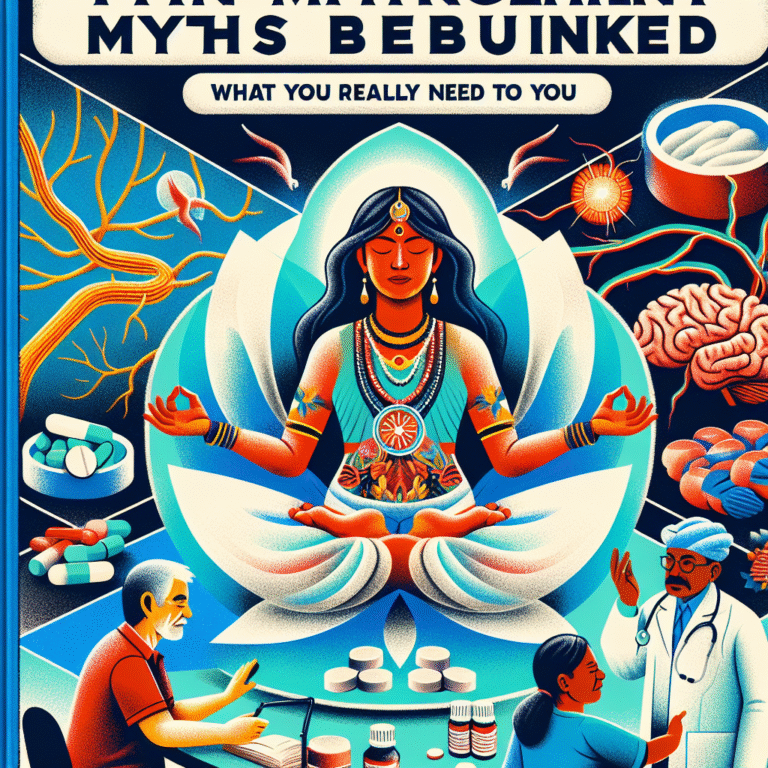
Introduction
As the global population ages, the mental and emotional well-being of seniors has become an increasingly pressing concern. In fact, the World Health Organization predicts that by 2050, there will be 2 billion people aged 60 and over worldwide. This demographic shift underscores the alarming reality that many seniors aren’t receiving the mental health care they desperately need. Enter Innovative Therapies in Geropsychology: Addressing the Needs of Seniors. These groundbreaking approaches are not merely alternative treatments; they represent a paradigm shift aimed at enhancing the quality of life for our aging population.
In this article, we’ll delve deep into various innovative therapies currently reshaping geropsychology, examining their effectiveness, real-world applications, and how they might serve the diverse needs of seniors. By the end of this exploration, you’ll have a comprehensive understanding of how these therapies are revolutionizing the way we approach mental health in aging populations.
Understanding Geropsychology
Geropsychology is an area of psychology focused specifically on the mental health of older adults. It encompasses the assessment and treatment of age-related psychological changes and challenges. As seniors face unique stressors—such as loss, chronic illness, and cognitive decline—the need for tailored therapies becomes increasingly evident.
Case Study: The Role of Geropsychology
Consider the story of Mr. Thompson, a 75-year-old widower struggling with depression following the death of his spouse. Traditional approaches such as medication alone weren’t sufficient to address his pervasive feelings of sadness and isolation. By engaging a geropsychologist skilled in innovative therapies, Mr. Thompson began participating in a group therapy designed specifically for elderly men coping with loss. This approach not only provided him with coping strategies but also fostered social connections, ultimately improving his mental health.
The Need for Innovative Therapies
Prevalence of Mental Health Issues in Seniors
A staggering 15% to 30% of older adults experience mental health disorders, including depression and anxiety. Unfortunately, many do not seek help due to stigma, lack of awareness, or inadequate access to care. This is where Innovative Therapies in Geropsychology: Addressing the Needs of Seniors come into play—providing new avenues for engagement and healing.
Barriers to Traditional Treatments
Many traditional therapies fail to consider the unique challenges faced by seniors, such as mobility issues or cognitive impairments. As a result, innovative therapies are essential to ensuring that mental health treatments are not only effective but accessible.
Categories of Innovative Therapies in Geropsychology
1. Technology-Driven Solutions
Teletherapy
In a world increasingly reliant on technology, teletherapy has emerged as a lifeline for seniors. By bridging geographical gaps, teletherapy services allow older adults to access mental health professionals from the comfort of their homes.
Virtual Reality (VR) Therapy
Imagine donning a VR headset and finding yourself in a serene forest setting. VR therapy uses immersive environments to reduce anxiety, manage pain, and improve overall emotional well-being. Research has shown positive outcomes, especially in treating PTSD and phobias among older adults.
Table 1: Comparative Analysis of Traditional vs. Innovative Therapies
| Therapy Type | Accessibility | Engagement | Effectiveness |
|---|---|---|---|
| Traditional Therapy | Low | Moderate | Moderate |
| Teletherapy | High | High | High |
| VR Therapy | High | Very High | High |
2. Art and Expressive Therapies
Art therapy allows seniors to express themselves creatively, an essential outlet for emotions that might otherwise be difficult to articulate. This form of innovative therapy has been particularly effective in dementia care, helping to unlock memories and emotions.
Music Therapy
Music therapy offers a rich, engaging environment for seniors, harnessing the emotional power of music to stimulate memory and encourage socialization. Case studies have shown that seniors participating in music therapy report improved mood and enhanced cognitive function.
Case Study: Music Therapy in Alzheimer’s Care
A study involving an Alzheimer’s care facility implemented weekly music therapy sessions. Residents exhibited fewer depressive symptoms, demonstrating how Innovative Therapies in Geropsychology: Addressing the Needs of Seniors can foster emotional healing.
3. Mindfulness and Cognitive Approaches
Cognitive Behavioral Therapy (CBT) tailored specifically for seniors can address issues such as anxiety and depression, integrating techniques like mindfulness to promote emotional resilience.
Mindfulness-Based Stress Reduction (MBSR)
MBSR programs have shown significant promise in reducing stress and improving psychological well-being in older adults. This approach empowers seniors to cultivate self-awareness and manage their mental health proactively.
The Importance of Holistic Approaches
Innovative therapies often emphasize holistic care, addressing not just the psychological but also the physical and spiritual dimensions of well-being.
Case Study: The Holistic Approach at Meadowbrook Rehabilitation Center
At Meadowbrook, a rehabilitation center, a team of geropsychologists utilizes a comprehensive strategy that incorporates physical activity, relaxation techniques, and group therapy. This integrated approach has not only improved psychological outcomes but has also encouraged seniors to adopt healthier lifestyles, proving the effectiveness of Innovative Therapies in Geropsychology: Addressing the Needs of Seniors on multiple fronts.
Evaluating Effectiveness: Measuring Outcomes of Innovative Therapies
To understand the impact of these therapies, we must assess their outcomes rigorously.
Key Metrics for Success
When evaluating innovative therapies in geropsychology, several metrics are critical:
- Patient Satisfaction: Surveys and feedback can gauge how effective the therapies are from the participants’ perspective.
- Reduction in Symptoms: Tracking changes in standardized assessments can help verify the effectiveness of treatments.
- Quality of Life: Holistic evaluations may include measures of daily functioning, social interactions, and overall happiness.
Table 2: Effective Metrics for Assessing Therapies
| Metric | Definition | Importance |
|---|---|---|
| Patient Satisfaction | Feedback from patients on therapy | Validates effectiveness |
| Symptom Reduction | Reduction in severity of mental health symptoms | Tracks improvement |
| Quality of Life | Measures overall happiness, social interactions | Holistic evaluation |
Future Directions for Innovative Therapies in Geropsychology
As we look toward the future, the need for continual innovation is paramount. Emerging technologies, integrative models, and community-based programs hold promise for enhancing the mental health landscape for seniors.
Community Partnerships
Collaborations between mental health programs and community organizations can bolster outreach and access to innovative therapies. By investing in local initiatives, we can build a robust support network for our aging population.
Continued Research
Robust scientific research is instrumental in validating innovative therapies. Expanding research initiatives into the effectiveness of these therapies will help make the case for broader incorporation into mainstream geropsychology treatment paradigms.
Conclusion
The landscape of mental health care for seniors is changing rapidly, with Innovative Therapies in Geropsychology: Addressing the Needs of Seniors leading the way. As we continue to embrace innovative practices—from teletherapy and VR to art and mindfulness—we are better positioned to meet the complex needs of an aging population.
In doing so, we empower seniors to reclaim their lives, experience joy, and foster meaningful connections, reminding us that age should never be a barrier to mental wellness.
FAQs
1. What are innovative therapies in geropsychology?
Innovative therapies in geropsychology refer to new and creative approaches that enhance mental health care for seniors, including technology-driven methods, expressive therapies, and holistic practices.
2. How do innovative therapies differ from traditional ones?
Innovative therapies often focus on accessibility, engagement, and holistic care, considering the unique needs and challenges faced by seniors, while traditional therapies may not address these factors adequately.
3. Are these therapies covered by insurance?
Coverage varies widely by insurance provider and plan. It’s essential for seniors and their families to check their specific plans to determine coverage options for innovative therapies.
4. How can families support seniors in seeking innovative therapies?
Families can play a crucial role by educating themselves about available therapies, encouraging open discussions about mental health, and helping seniors access resources and professionals in the field.
5. What steps can be taken to advocate for more innovative therapies for seniors?
Advocating for additional resources and research in innovative therapies can involve community petitions, engaging local mental health organizations, and promoting awareness among policymakers to prioritize mental health for aging populations.
With a wealth of innovative therapies available, the future of geropsychology looks promising. Together, we can ensure that aging is not just about enduring but thriving—mentally, emotionally, and physically.














